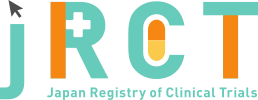臨床研究等提出・公開システム
|
Mar. 08, 2019 |
|
|
Jan. 25, 2021 |
|
|
jRCTs071180034 |
Efficacy and safety of intensified induction, autologous stem cell transplantation, consolidation and maintenance therapy in patients with newly diagnosed multiple myeloma: a phase2 study (JSCT MM14) |
|
Newly diagnosed multiple myeloma: a phase2 study -JSCT-MM14- (JSCT MM14) |
|
Nov. 24, 2020 |
|
55 |
|
Sex (Male / Female):33 / 22 Age (median years (range)):58 (41 - 65) Performance status:PS 0 26/PS1 16/PS2 7/PS>=3 5 International Staging System:1 19/2 27/3 9 Durie & Salmon:1 4/2 11/3 40 Type of M protein:IgG 39/IgA 5/IgD 2/Bence Jones 8/Unknown 1 |
|
We started admitting participants into this study on August 1, 2015 after receiving approval from the Director of Kyushu University Hospital on July 14, 2015. Sixty institutions nationwide responded to our recruitment call. By the end of September 2016, 47 institutions approved this study to be conducted at their sites. The first subject was enrolled in August 2015. The subsequent enrollment was smooth, and the planned sample size of 53 was achieved on August 16, 2016. We therefore closed the enrollment process at the end of September 2016. The final number of subjects enrolled was 55. Funded by Celgene Corporation on the basis of an "Agreement on an Investigator-Initiated Clinical Study" and led by the Japan Study Group for Cell Therapy and Transplantation (JSCT), this study meets the definition of a "specified clinical trial" in the Japanese Clinical Trials Act. We therefore applied for transitional measures to the Kyushu University Certified Institution Review Board, and the IRB approved this study as a specified clinical trial on February 21, 2019. On March 8, 2019, this study was published on the Japan Registry of Clinical Trials (jRCT). By the end of September 2019, 27 institutions from which subject(s) had been enrolled approved this study to be conducted as a specified clinical trial at them. |
|
Before this study was approved as a specified clinical trial, serious adverse events (SAEs) were observed in 6 subjects. Six of them were reported to the principal investigator as expedited cases and continued study participation after the principal investigator consulted with the Data and Safety Monitoring Committee. The expedited SAEs consisted of grade 4 sepsis (2 subjects), grade 4 hyponatremia (1 subject), grade 4 hypokalemia (1 subject), unexpected grade 3 fibrinogen decreased (1 subject), and hospitalization for the treatment of sinusitis (1 subject). A non-expedited SAE was also reported: 1 subject experienced unexpected grade 3 rash (caused by kiwifruit) before the administration of drugs. For scVCD, major grade 3 or higher adverse events included neutropenia (15%), anemia (13%), hepatic dysfunction (7%), infection (6%), and thrombocytopenia (6%), and grade 4 adverse events included neutropenia (5%), thrombocytopenia (4%), and hyponatraemia/febrile neutropenia/infection (2%). As for scVRD, major grade 3 adverse events included neutropenia (3%) and thrombocytopenia (11%), and grade 4 adverse events included neutropenia (1%). During PBSCH and ASCT, toxicities were tolerable. After the transition based on transitional measures to a specified clinical trial, there was no "serious case of disease or the like" as defined in the Japanese Clinical Trials Act. |
|
The complete remission (CR) after scVRD (primary outcome measure) was 40% (90% CI, 30-51), falling short of the threshold used to calculate the sample size (35%). By treatment, the percentages of subjects who completed the treatment were: scVCD, 50%; PBSCH, 85%; ASCT, 67%; and scVRD, 65%. The percentages of subjects who achieved a CR or better remission (sCR+CR) were: scVRD, 11%; PBSCH, 20%; ASCT, 33%; and scVRD, 40%. The 3-year OS, PFS, and TTP rates were 95%, 86%, and 86%, respectively. |
|
The study treatment was in some degree effective, but the complete remission after scVRD fell short of the threshold we set. Induction with 4 cycles of scVCD, auto-PBSCT with Bor plus high-dose MEL, and consolidation with scVRD were highly tolerable, despite being intensified treatments. |
|
Dec. 25, 2020 |
|
Undecided |
|
Undecided |
|
https://jrct.mhlw.go.jp/latest-detail/jRCTs071180034 |
Sunami Kazutaka |
||
National Hospital Organization Okayama Medical Center |
||
Okayama, Okayama Prefecture, Kita-ku, Tamasu 1711-1 |
||
+81-86-294-9911 |
||
kazusuna@pop12.odn.ne.jp |
||
Sunami Kazutaka |
||
National Hospital Organization Okayama Medical Center |
||
Okayama, Okayama Prefecture, Kita-ku, Tamasu 1711-1 |
||
+81-86-294-9911 |
||
kazusuna@pop12.odn.ne.jp |
Complete |
July. 14, 2015 |
||
| Aug. 11, 2015 | ||
| 53 | ||
Interventional |
||
single arm study |
||
open(masking not used) |
||
no treatment control/standard of care control |
||
single assignment |
||
treatment purpose |
||
1. Multiple myeloma diagnosed by the criteria of International Myeloma Working Group (IMWG). Age from 20 to 65 years old. |
||
1. Non-secretory MM, plasma cell leukemia, POEMS syndrome, and Waldenstrom Macroglobulinemia. |
||
| 20age old over | ||
| 65age old under | ||
Both |
||
Multiple myeloma |
||
Induction therapy (4 courses, every 3 weeks):Bortezomib 1.3mg/m2 sc (day1,4,8,11), cyclophosphamide 500mg/m2 iv (day1, 8), dexamethasone 40mg/day po (day 1,4,8, 11). |
||
Multiple myeloma |
||
Complete response (CR) rates after consolidation therapy. |
||
1. CR + stringent CR (sCR) rates after induction therapy. |
||
| Celgene K.K. | |
| Not applicable |
| Celgene K.K. | |
| Not applicable |
| Kyushu University Certified Institutional Review Board for Clinical Trials | |
| 3-1-1 Maidashi Higashi-ku Fukuoka, Fukuoka | |
+81-92-642-5082 |
|
| byskenkyu@jimu.kyushu-u.ac.jp | |
| Approval | |
Feb. 21, 2019 |
| UMIN000016440 | |
| UMIN Clinical Trials Registry |
none |
